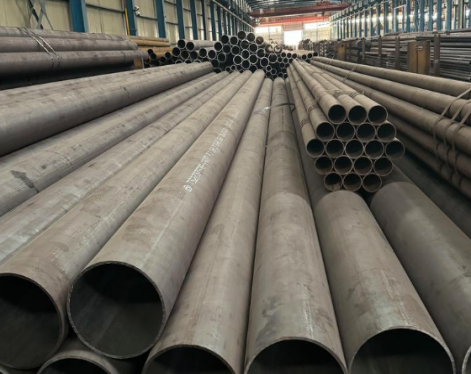1. Why is 304 stainless steel plate magnetic?
(1) Raw material smeltingThe smelting process will cause fluctuations in chemical composition, so that austenitic stainless steel plate such as 304 contains a small amount of ferrite structure, which will make it weakly magnetic.
(2) Cold working
During the cold working process, such as cold rolling, the cold working structure of 304 stainless steel plate will transform into martensite, thus becoming magnetic. Generally, the greater the degree of cold working deformation, the more martensite transformation, and the greater the magnetism.
2. Is it necessary to demagnetize 304 stainless steel plate?
Non-magnetic stainless steel is usually better than magnetic stainless steel.(1)Corrosion resistance: Non-magnetic stainless steel has stronger corrosion resistance, which makes it more suitable for many applications, especially those that need to resist chemical corrosion.
(2) Material and health safety: Non-magnetic stainless steel usually contains more chromium and nickel. These elements not only enhance its corrosion resistance, but also improve the safety and health standards of the material. In addition, non-magnetic stainless steel undergoes solid solution heat treatment before leaving the factory, eliminating the residual magnetism and ensuring a non-toxic and odorless use environment.

(3) Application convenience: Non-magnetic stainless steel pots do not require additional processing steps such as solid solution heat treatment during the production process, which simplifies the production process and improves the availability of the product.
In summary, although magnetic stainless steel may have advantages in some aspects (such as strength and thermal conductivity), non-magnetic stainless steel is usually a better choice in terms of overall performance and application convenience.
3. How to demagnetize 304 stainless steel plate?
The demagnetization methods of stainless steel plates mainly include high-temperature demagnetization method and low-temperature demagnetization method. The high-temperature demagnetization method involves heating the stainless steel plate to a high temperature, usually around 1050°C, and then rapidly cooling it. This process can eliminate the magnetism of the stainless steel plate. This method uses high-temperature solid solution treatment to fully dissolve the excess phase in the alloy in the solid solution, thereby restoring a stable austenite structure and achieving the purpose of demagnetization. In specific operation, the stainless steel plate can be heated to above the critical temperature, kept warm for a period of time to ensure uniform temperature distribution and change the crystal structure, and then slowly cooled to room temperature to stabilize the crystal structure of the material and reduce the magnetism as much as possible.
The low temperature demagnetization law uses the low temperature environment to rearrange the magnetic atoms inside the stainless steel material, thereby reducing the magnetism. This method is suitable for situations where the magnetism requirements are not high and the non-magnetic state does not need to be maintained for a long time. The specific operation is to put the stainless steel tube into a low temperature medium such as liquid nitrogen or liquid helium, and take it out after keeping it for a period of time to achieve demagnetization.
In addition, for 304 stainless steel plates, magnetism can also be reduced or eliminated by cold working methods. Cold working such as cold drawing or cold rolling can change the crystal structure of 304 stainless steel, making the crystal structure more uniform, thereby reducing the magnetic influence of iron elements. This is a relatively economical and common method that does not require additional equipment and materials.
In summary, the demagnetization methods for stainless steel plates include high-temperature demagnetization, low-temperature demagnetization and cold working. The specific method to be selected depends on the specific requirements for the magnetic properties of the material and considerations of cost and feasibility.
Previous:H Beam vs U Beam









